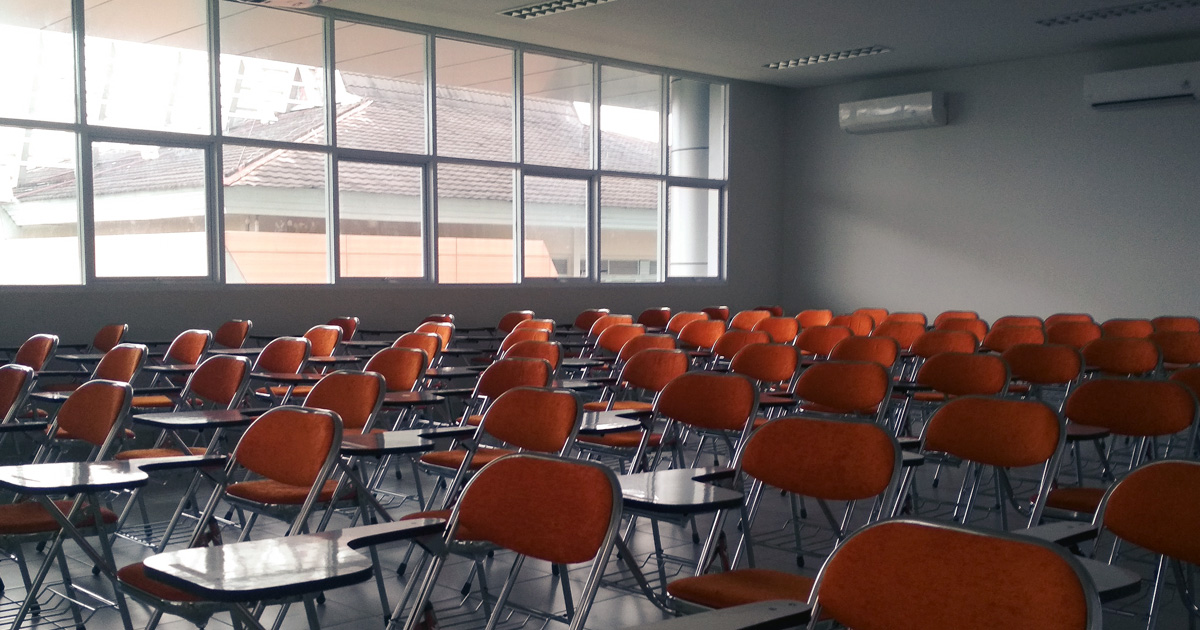Education has undergone significant transformation over the years, with technology playing a pivotal role in shaping new learning paradigms. Among these innovations, the flipped classroom model has emerged as a revolutionary approach, redefining traditional teaching methods and enhancing student engagement. With the rise of hybrid and personalised learning approaches, the flipped classroom model has proven to be a timely and effective educational strategy.
Table of Contents
- What is a flipped classroom?
- Benefits of a flipped classroom
- The role of technology in flipped learning
- Challenges and solutions
- Flipped classrooms: the future of education
- Take the next step with Digital Samba
What is a flipped classroom?
The flipped classroom's meaning lies in its fundamental departure from conventional teaching practices. In a traditional setup, students attend lectures in class and complete assignments at home. The flipped classroom model, however, reverses this process. Here, students engage with instructional content—typically videos or reading materials—at home before class. Classroom time is then devoted to interactive activities like discussions, problem-solving, and hands-on exercises. This shift allows students to better prepare for class and actively participate in collaborative and practical applications of the material.
The instructional content provided in a flipped classroom can take various forms, including video lectures, multimedia presentations, or curated readings. These resources are often designed to be engaging and accessible, enabling students to absorb information at their own pace. This flexibility is particularly beneficial for learners who need additional time to grasp complex topics or those who prefer to revisit material for a deeper understanding.
This model was first popularised in the early 2000s by educators Jonathan Bergmann and Aaron Sams, who implemented it while teaching high school chemistry. They recognised the need for a method that would allow students to learn at their own pace and maximise teacher-student interaction during class. Bergmann and Sams’ pioneering efforts demonstrated how flipping the classroom could transform passive learning into an active and student-centred experience.
Moreover, the flipped classroom definition extends beyond just reversing the traditional flow of instruction. It signifies a broader shift towards prioritising higher-order thinking skills, such as analysis, evaluation, and creation, during in-class activities. By moving foundational learning tasks outside the classroom, teachers create a more dynamic and engaging environment where students can apply knowledge, ask questions, and receive personalised guidance.
Benefits of a flipped classroom
The flipped classroom approach offers numerous advantages for both students and educators:
-
Enhanced engagement: By flipping the classroom, students take an active role in their learning journey. Research from the Journal of Educational Technology & Society found that flipped learning improved student engagement by 70% compared to traditional methods. This active participation fosters a sense of ownership in the learning process, which is critical for developing lifelong learning habits.
-
Customised learning: Flipped classrooms cater to diverse learning styles. Students can pause, rewind, or revisit instructional videos as needed, ensuring better understanding and retention of concepts. This self-paced approach allows students to tailor their learning experience to their individual needs, which is especially valuable for students with varying levels of prior knowledge.
-
Improved collaboration: The classroom becomes a hub for collaborative learning. Activities like group projects, peer discussions, and case studies foster teamwork and critical thinking. This collaborative atmosphere enhances problem-solving skills and prepares students for real-world scenarios where teamwork is essential.
-
Higher academic achievement: Studies indicate that the flipped classroom method can lead to higher test scores and deeper comprehension. For instance, a study published in The Journal of Engineering Education revealed a 12% increase in exam scores among students who participated in flipped classrooms. This improvement is attributed to the opportunity for more in-depth exploration of concepts and immediate feedback during class activities.
-
Better use of class time: Teachers spend less time lecturing and more time addressing individual student needs. This optimised approach enhances the overall learning experience, allowing educators to provide targeted support and foster critical thinking. Instead of merely covering content, teachers can focus on facilitating meaningful interactions and fostering a deeper understanding of the subject matter.
-
Increased motivation and confidence: Students in a flipped classroom often report feeling more motivated and confident in their abilities. The ability to come to class prepared and actively engage with the material reduces anxiety and encourages participation. According to a survey conducted by EdTech Magazine, 85% of students in flipped classrooms felt more confident about their learning compared to traditional setups.
The role of technology in flipped learning
Flipped classroom technology is integral to the success of this approach. Platforms like Digital Samba provide seamless video conferencing and content-sharing capabilities, enabling educators to deliver pre-recorded lectures and facilitate live, interactive sessions. These tools are GDPR-compliant, ensuring a secure learning environment.
Moreover, Digital Samba’s content library feature empowers teachers to organise and share resources effortlessly. High-definition video conferencing allows for clearer communication, making flipped lectures more engaging and effective. Additionally, features such as screen sharing and real-time annotation enhance the interactivity of live sessions, enabling educators to demonstrate complex ideas more effectively.
Another significant advantage is the ability to track student progress. Digital Samba’s analytics tools provide insights into how students engage with pre-class materials, allowing educators to identify areas where students may need additional support. This data-driven approach ensures a more personalised and effective learning experience.
Emerging technologies like augmented reality (AR) and virtual reality (VR) also promise to take flipped learning to the next level, creating immersive educational experiences that make complex subjects more accessible and engaging.
Challenges and solutions
While the flipped classroom model has numerous benefits, it is not without challenges. Here are common obstacles and how they can be overcome:
-
Creating quality content: Developing engaging pre-class materials requires time, expertise, and resources. Educators can benefit from professional development programmes to enhance their skills in content creation and instructional design.
-
Student resistance: Resistance often stems from unfamiliarity with the model. Setting clear expectations, introducing the approach gradually, and demonstrating its benefits can help ease the transition.
-
Technology disparities: Not all students have equal access to technology. Schools can address this by providing resources such as lending programs, computer labs, and offline-compatible materials.
-
Managing in-class dynamics: Effective in-class activities require careful planning. Structured exercises, peer-to-peer learning, and collaborative tools can help ensure that every student is engaged and benefits from the flipped classroom experience.
Flipped classrooms: the future of education
The flipped classroom approach aligns perfectly with the demands of modern education. It prepares students for a collaborative, technology-driven world while empowering educators to focus on high-value interactions. As technology continues to evolve, the potential of flipped learning will only grow, making it a cornerstone of 21st-century education.
Flipped classrooms are particularly effective in fostering critical skills needed for the future workforce, including collaboration, digital literacy, and self-directed learning. With global organisations increasingly prioritising these competencies, flipped classrooms bridge academic learning and real-world applications.
Moreover, the adaptability of the flipped classroom model makes it viable for various educational settings, from primary schools to corporate training. Institutions adopting flipped classrooms also benefit from improved resource utilisation, such as reduced physical space needs and cost savings.
Take the next step with Digital Samba
Ready to embrace the flipped classroom model? Digital Samba offers the tools and technology to make flipped learning seamless and effective. Our platform includes high-definition video conferencing, a robust content library, and advanced analytics to support your flipped learning journey.
Join educators worldwide in transforming educational practices. Reach out to our sales team today to explore how Digital Samba can empower both educators and students. Together, let’s reimagine education for a dynamic, future-ready learning environment.
Share this
You May Also Like
These Related Stories

Strategies for Successful Distance Learning

Using Storytelling in Online Education

